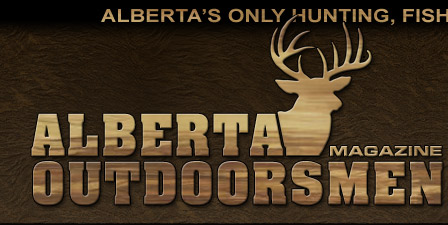|
 |
 |
Alberta’s Land-use Framework was designed to “set a vision of how a region should look over several decades” and to set the overall objectives for a region by identifying “areas with high value for conservation, agriculture, recreation or industrial development to better co-ordinate activity on the landscape.”
Next up for implementation is the South Saskatchewan Regional Plan (SSRP), an area covering the majority of southern Alberta. But before final decisions and implementation can take place, Albertans have the opportunity to provide feedback on the advice from the South Saskatchewan Regional Advisory Council (RAC). These were the people charged with gathering the information required to give direction, or advice, to the government for implementation of the SSRP.
And now we are in Phase 2 of that process. The information and the advice have been given, now it’s being presented to the public in the form of a workbook requesting your input. And if you hunt or recreate in southern Alberta, your input should be provided, considering much of the advice provided to the government by the RAC could have serious implications on how, when, and where you will be able to hunt in this part of Alberta.
And how much that might cost you.
 |
| Access to private land in southern Alberta may become non-existent for many resident hunters without large pocketbooks. Is paid-for hunting soon to be a reality in Alberta? |
Back in 2008, when then Minister of Sustainable Resource Development, Ted Morton, was charged with bringing the Land-use Framework to fruition, two programs were brought forward that provided a roundabout way for landowners to be paid for access for hunting privileges—the Recreational Access Management Plan, or RAMP, and the Hunting for Habitat (HFH) program, which would have seen landowners issued hunting tags for various species they could then sell to the highest bidders. In return, participating landowners would have had to allow residents access to their land for hunting purposes.
While many, myself included, could see merit in the RAMP, provided hunters weren’t actually paying for access, HFH was fiercely fought against for many reasons, eventually being relegated to the backshelf.
Then, with no money, the RAMP slowly eroded away to a mere shadow of its former self. Paid hunting, however, was an issue many feared would rear its ugly head again. And now it has with the SSRP.
The differences between the recently completed Lower Athabasca Regional Plan and the ongoing South Saskatchewan Regional Plan are, in many ways, quite dramatic. This is the result of two very different regions of the province with very different issues.
In the south, the biggest issue facing hunters, and to a lesser extent, anglers, is access to both private and public lands, being those public lands held under the disposition of a grazing lease.
Under section 5.3, Biodiversity, of the recommendations to government for the SSRP, is this recommendation.
Respect private property rights by developing a suite of conservation and stewardship tools (e.g., economic and market-based incentives, conservation easements, transferable development credits, mitigation banking and paid access for hunting) that can be voluntarily used by landowners and disposition holders to help sustain biodiversity.
Hunters should be very concerned
Outfitters too should be concerned.
It is common knowledge that access is being paid for by outfitters in the south, regardless of legality. But with the legalization of paid access onto private lands, or even those lands held under the disposition of a grazing lease, what happens to the price? As with anything, demand sets the price and in this case, the rights to hunt certain parcels of land will demand a very high price indeed, much higher than what is currently being paid. And if you were the one to pay for that right, you wouldn’t be too happy if others were hunting your private sanctuary.
Paid access for hunting on private land results in a loss of hunting access, not an increase in access. It is a flawed system.
If a system is required for access to private land and to grazing leases in southern Alberta, many believe some minor tweaking to the current RAMP would suffice.
It has been stated “landowners should not bear the full cost of producing habitat for wildlife or the inconvenience and impacts of public use on their land without compensation.”
I get that.
I also get that “Wildlife is a public trust to be managed in the public interest.” Putting a price on that wildlife removes that trust.
You can voice your opinion on the SSRP by completing the workbook before December 21, 2012 – www.banister.ab.ca/SSRPworkbookphase2. It takes about 30 minutes to complete. If you hunt in southern Alberta, It could prove to be the most important 30 minutes you’ll spend this year. ■
For previous Outdoor Pursuits click here.
|
|
|
|


